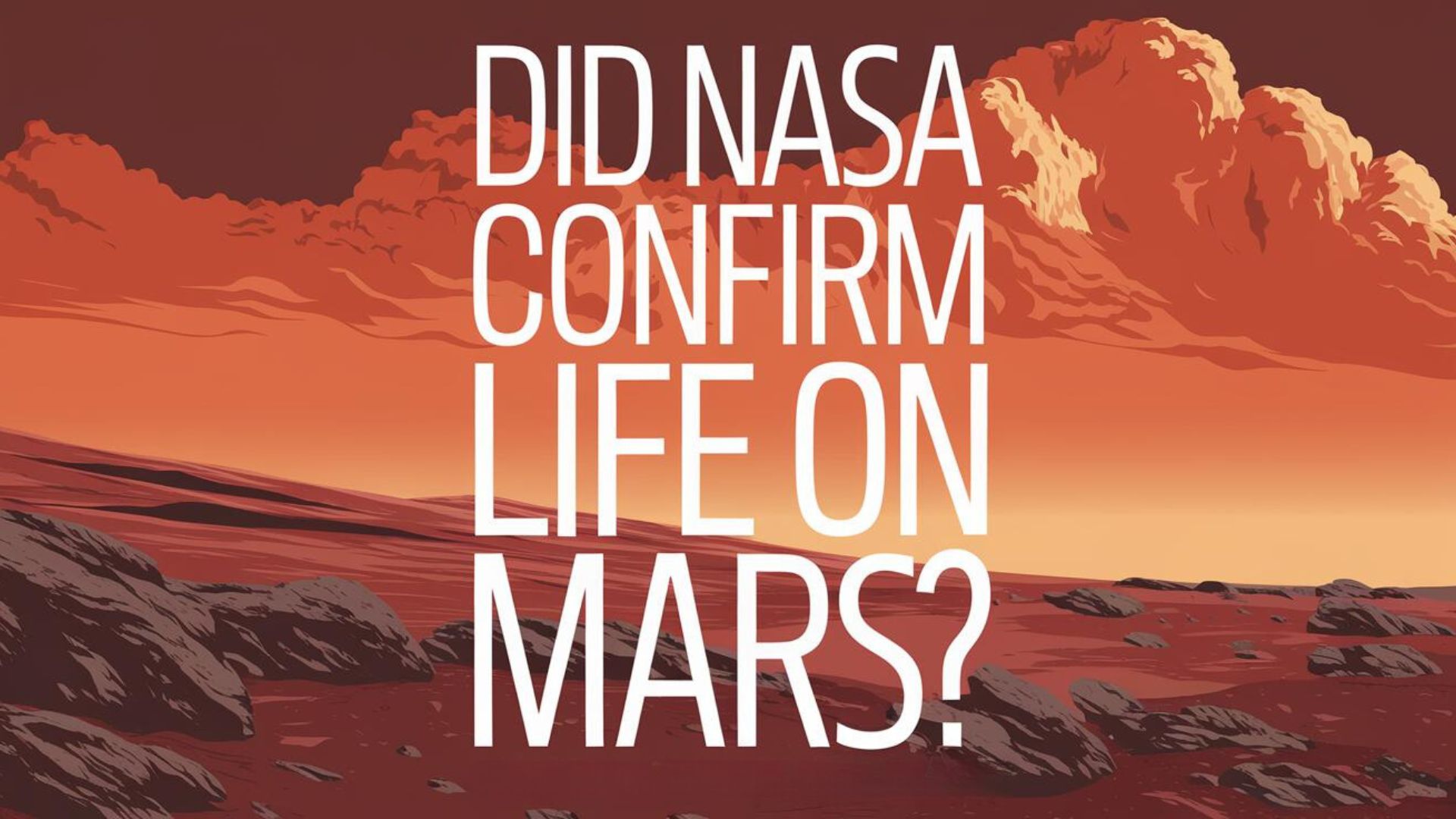Mars, our celestial neighbor, has long captivated the imagination of scientists and space enthusiasts alike. The quest to uncover evidence of extraterrestrial life on the Red Planet has been a driving force behind NASA’s ambitious Mars exploration program. While the agency hasn’t yet confirmed the existence of life on Mars, recent discoveries have ignited a new wave of excitement and speculation. Let’s dive into the latest findings and explore what they might mean for our understanding of life beyond Earth.
NASA’s Search for Life on Mars
Recent Discovery: “Cheyava Falls” Rock
- Found by: Perseverance Rover (July 2024)
- Calcium Sulfate Veins: Evidence of past water flow
- Organic Compounds: Detected by the SHERLOC instrument
- Leopard Spots: Potential chemical reactions linked to microbial activity
Ongoing Search
NASA continues to explore Mars for signs of life through:
- Perseverance Rover: Collecting rock samples for future return to Earth
- Past missions (e.g., Viking Landers) yielded inconclusive results
- Evidence of past water and organic molecules found
Challenges in Confirming Life
- Current rover instruments can’t definitively detect biosignatures
- Organic molecules can form through non-biological processes
- Potential fossils would be extremely small and hard to identify
Future Plans
- Returning Martian rock samples to Earth for advanced analysis
- Launching future missions to explore diverse Martian environments
The Perseverance Rover: A New Chapter in Martian Exploration
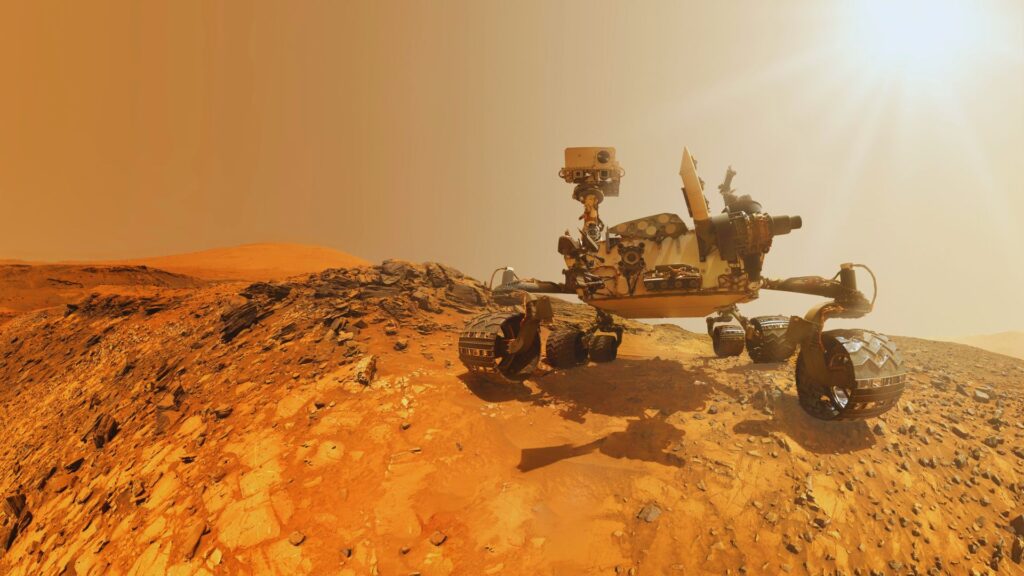
In July 2024, NASA’s Perseverance rover made headlines with a groundbreaking discovery that sent ripples through the scientific community. The rover, which has been tirelessly exploring the Martian surface since its landing in February 2021, stumbled upon a rock formation that has become the talk of the town among astrobiologists and planetary scientists.
The Cheyava Falls Discovery
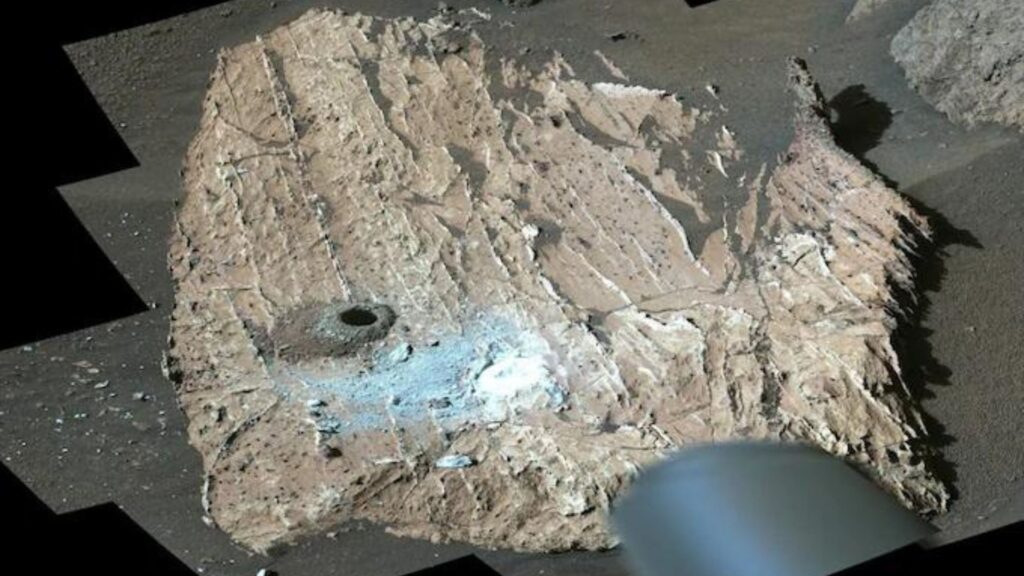
Dr. Alana Rodriguez, lead geologist for the Perseverance mission, couldn’t contain her excitement when describing the find. “We’ve nicknamed this rock ‘Cheyava Falls,’ and it’s unlike anything we’ve seen before on Mars,” she explained during a press conference at NASA’s Jet Propulsion Laboratory in Pasadena, California.
What makes Cheyava Falls so special? The rock exhibits three key features that have scientists buzzing about the possibility of ancient microbial life:
- White veins of calcium sulfate: These striking patterns indicate that water once flowed through the rock, potentially creating an environment conducive to life.
- Organic compounds: The rover’s SHERLOC (Scanning Habitable Environments with Raman & Luminescence for Organics & Chemicals) instrument detected complex organic molecules within the rock. While not definitive proof of life, these compounds are essential building blocks for living organisms as we know them.
- Mineral “leopard spots”: Perhaps the most intriguing feature, these unusual mineral formations could be evidence of chemical reactions potentially linked to microbial activity.
Dr. Rodriguez cautioned against jumping to conclusions, stating, “While these findings are incredibly promising, we need to be careful not to let our excitement cloud our judgment. There could be non-biological explanations for what we’re seeing, and it’s our job to explore all possibilities.”
The Hunt for Martian Life: A Historical Perspective
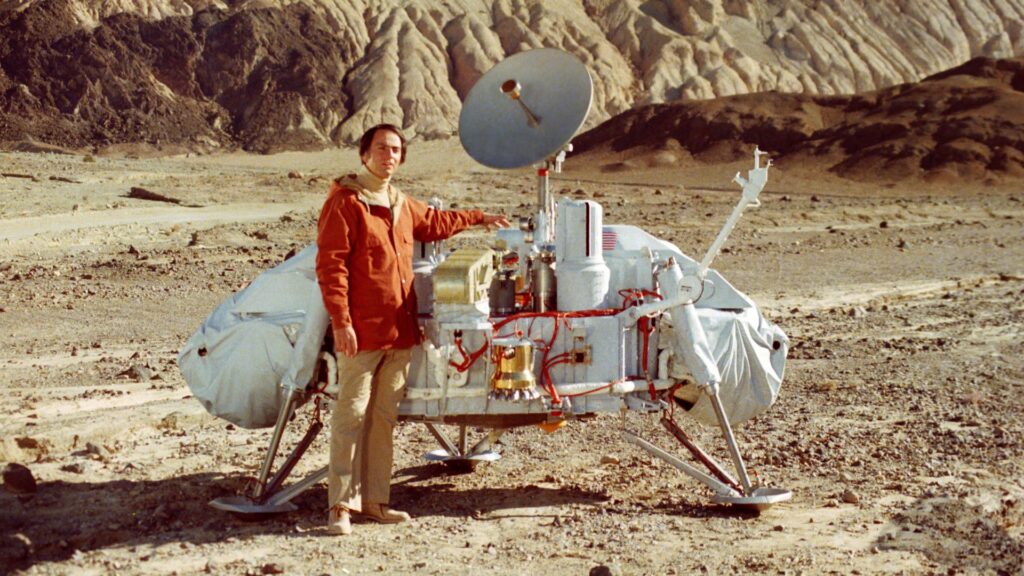
NASA’s search for life on Mars didn’t begin with Perseverance. The agency has been on this quest for decades, with each mission building upon the knowledge gained from previous expeditions.
The Viking Landers: Pioneers of Martian Exploration
In the 1970s, NASA’s Viking 1 and Viking 2 landers conducted the first experiments specifically designed to detect life on Mars. Dr. Gilbert Levin, a scientist involved with the Viking mission, made waves in 2019 when he claimed that the landers may have found evidence of life over 40 years ago.
Levin’s assertion is based on the results of the Labeled Release (LR) experiment, which detected signs of microbial respiration in Martian soil samples. However, the scientific community remains divided on the interpretation of these results, with many arguing that they could be explained by non-biological chemical reactions.
Dr. Sarah Thompson, a planetary scientist at the University of Arizona, weighed in on the controversy: “The Viking results are fascinating, but we have to remember that the technology available in the 1970s was limited compared to what we have today. While we can’t dismiss Levin’s claims entirely, we need more concrete evidence to support such an extraordinary conclusion.”
From Curiosity to Perseverance: A Legacy of Discovery
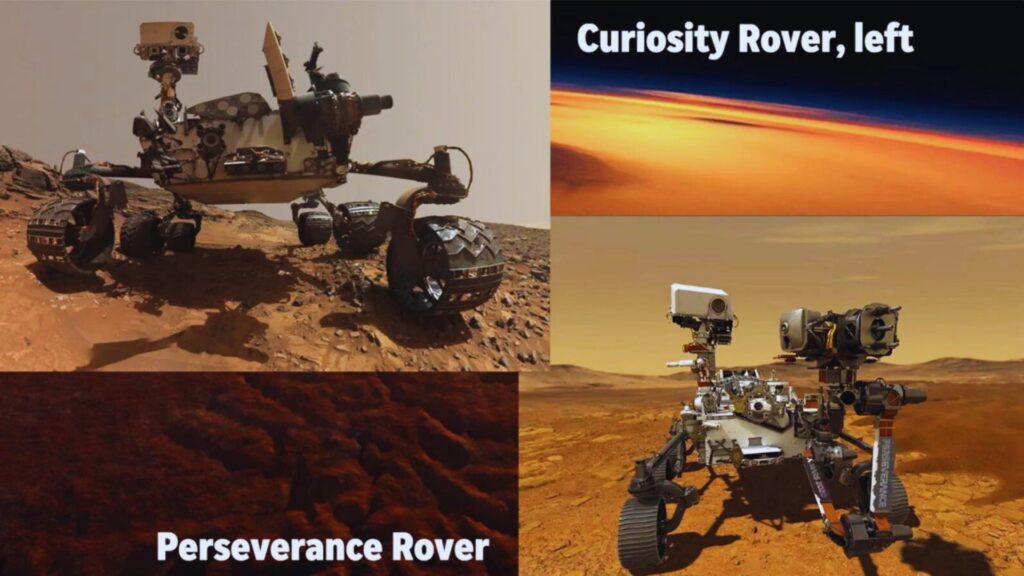
NASA’s more recent Mars missions have continued to uncover tantalizing clues about the planet’s potential for harboring life. The Curiosity rover, which landed on Mars in 2012, has made several groundbreaking discoveries:
- Organic molecules in 3-billion-year-old mudstones: In 2018, Curiosity detected complex organic molecules in rocks from an ancient lakebed. While not conclusive evidence of life, these findings suggest that the basic chemical ingredients for life were present on Mars in the distant past.
- Seasonal methane variations: Curiosity has observed fluctuations in atmospheric methane levels that could potentially be linked to biological processes. However, non-biological explanations, such as the interaction of water with certain minerals, remain possible.
Dr. Michael Chen, an astrobiologist at MIT, explained the significance of these findings: “Each discovery brings us one step closer to understanding Mars’ potential for supporting life. The presence of organic molecules and methane are like pieces of a cosmic puzzle we’re slowly putting together.”
The Challenges of Confirming Martian Life
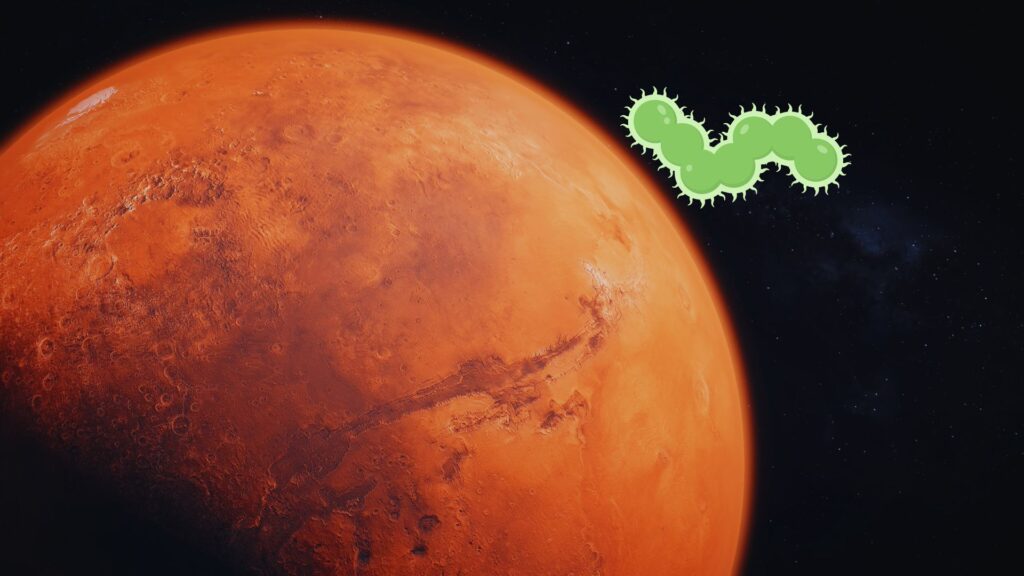
Despite the excitement surrounding recent discoveries, proving the existence of life on Mars remains an enormous challenge. Several factors contribute to the complexity of this scientific endeavor:
Technological Limitations
While rovers like Perseverance and Curiosity are marvels of engineering, they have limitations in their ability to detect and analyze potential biosignatures. Dr. Emily Nakamura, an instrument specialist at NASA’s Ames Research Center, explained:
“Our rovers are equipped with incredibly sophisticated instruments, but they’re still not as capable as the full suite of analytical tools we have in laboratories on Earth. This is why returning Martian samples to Earth for analysis is so crucial to our search for life.”
The Complexity of Organic Chemistry
One of the biggest hurdles in confirming Martian life is distinguishing between organic molecules produced by biological processes and those formed through non-biological means. Dr. Robert Simmons, a preeminent astrochemist, elaborated on this challenge:
“Organic molecules are simply carbon-based compounds, and they can be produced by a wide variety of processes, both biological and non-biological. Finding organic molecules on Mars is exciting, but it’s not a smoking gun for life. We need to look at the specific types of molecules, their concentrations, and their distribution to make more definitive conclusions.”
The Search for Microfossils
If life did exist on Mars in the past, it was likely microbial in nature. Detecting fossilized remains of such tiny organisms presents a significant challenge. Dr. Lisa Kiang, a paleobiologist specializing in early Earth life, shared her perspective:
“Identifying microfossils on Earth, where we know life has existed for billions of years, can be incredibly difficult. Now imagine trying to do that on Mars, where we’re not even sure if life ever existed. It’s like looking for a needle in a haystack, except the needle might be microscopic, and the haystack is an entire planet.”
The Road Ahead: NASA’s Plans for Unraveling the Martian Mystery

As the search for life on Mars continues, NASA has ambitious plans to overcome the current limitations and push the boundaries of our understanding.
The Mars Sample Return Mission
Perhaps the most exciting development on the horizon is the Mars Sample Return mission, a joint effort between NASA and the European Space Agency (ESA). This multi-billion dollar project aims to bring Martian rock and soil samples back to Earth for detailed analysis.
Dr. James Morrison, NASA’s lead scientist for the Mars Sample Return mission, outlined the project’s significance:
“Returning samples from Mars to Earth will be a game-changer. We’ll be able to apply the full power of Earth-based laboratories to these samples, using techniques and instruments that are simply too large or complex to send to Mars. This mission has the potential to definitively answer the question of whether life ever existed on Mars.”
The mission is currently scheduled to return samples to Earth in the early 2030s, marking a new era in our exploration of the Red Planet.
Future Mars Missions
NASA isn’t putting all its eggs in one basket. The agency has plans for additional Mars missions that will explore diverse environments across the planet. Dr. Catherine Wu, Deputy Director of NASA’s Mars Exploration Program, shared some insights:
“We’re in the early stages of planning missions to explore potential subsurface water reservoirs and investigate the mysterious recurring slope lineae that might indicate the presence of liquid water on the Martian surface today. Each new mission will target different environments that could potentially harbor life or preserve evidence of past life.”
The Implications of Life on Mars
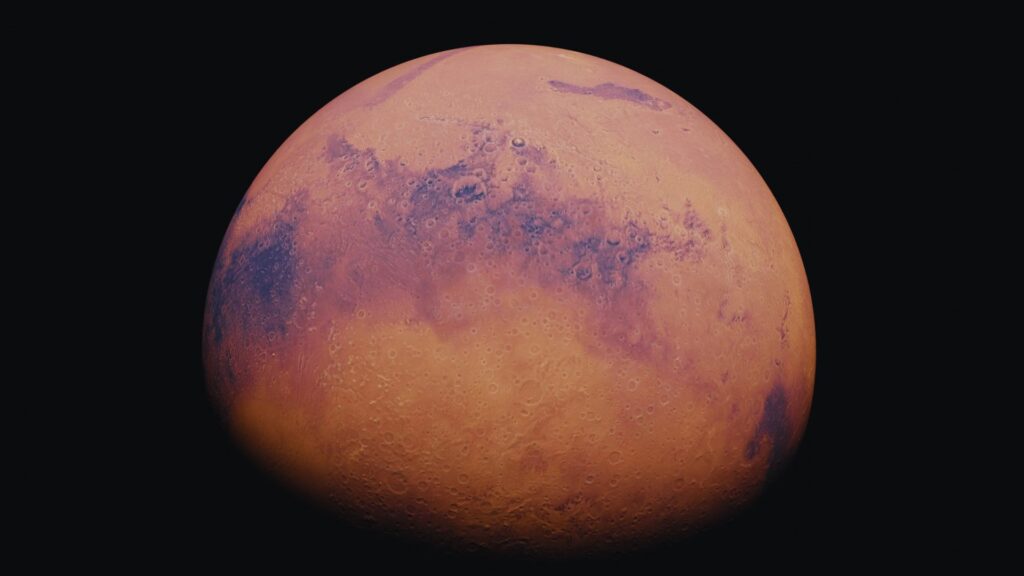
As we eagerly await future discoveries, it’s worth considering the profound implications of finding life on Mars, even if it’s only evidence of ancient microbial life.
Dr. Alan Stern, a planetary scientist and principal investigator of NASA’s New Horizons mission, offered his thoughts:
“Confirming the existence of life on Mars, past or present, would be one of the most significant scientific discoveries in human history. It would suggest that the emergence of life might be a relatively common occurrence given the right conditions, dramatically increasing the likelihood of life existing elsewhere in the universe.”
The discovery of Martian life could also have implications for our understanding of life’s origins on Earth. Dr. Samantha Lee, an origin-of-life researcher at Harvard University, explained:
“If we find that life on Mars and Earth share a common biochemical basis, it could suggest that life was transferred between the two planets early in their history, possibly through meteorite impacts. Alternatively, if Martian life is fundamentally different from Earth life, it would imply that life can arise independently under different conditions, which would be equally profound.”
Conclusion: The Quest Continues
While NASA has not yet confirmed the existence of life on Mars, the agency’s relentless exploration of the Red Planet continues to yield fascinating results. From the intriguing features of Cheyava Falls to the planned Mars Sample Return mission, we are living in an exciting time for Mars research.
As we await future discoveries, one thing is certain: the search for life on Mars will continue to push the boundaries of our scientific knowledge and technological capabilities. Whether or not we ultimately find evidence of Martian life, the journey of exploration and discovery is invaluable in its own right, expanding our understanding of our cosmic neighborhood and our place within it.
The next decade promises to be a thrilling time for Mars exploration. Who knows what secrets the Red Planet may yet reveal? As we continue to explore and learn, we edge ever closer to answering one of humanity’s most profound questions: Are we alone in the universe?


